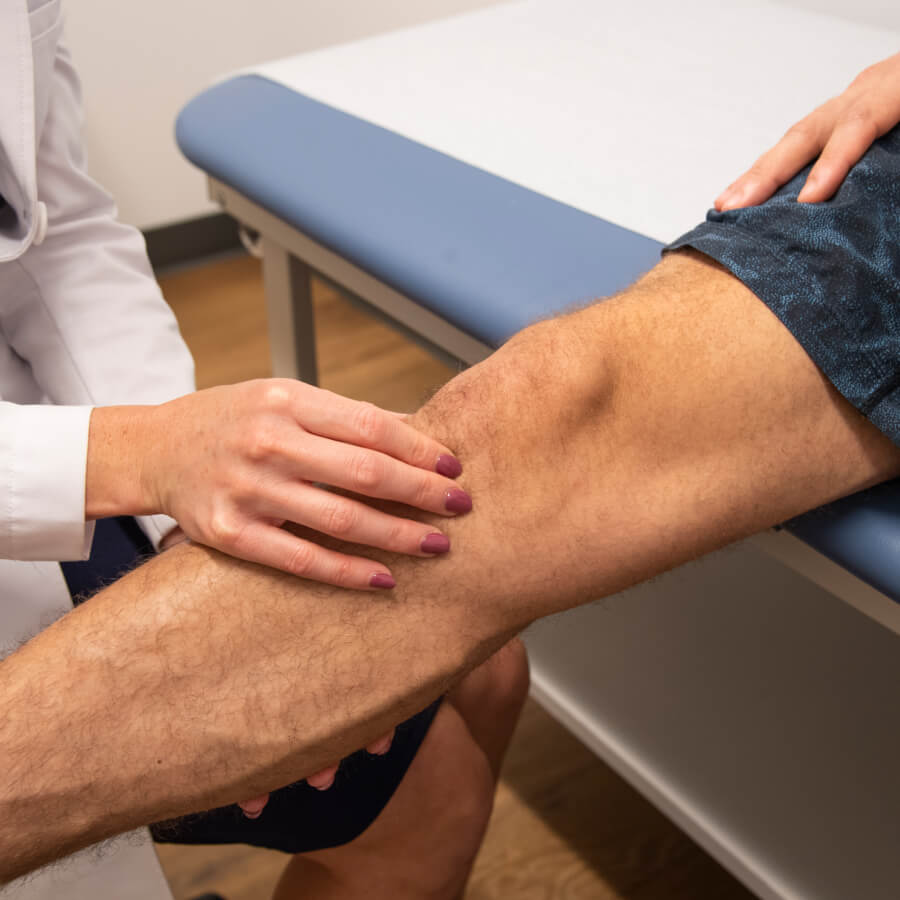Orthopedic Care for ACL Tears
The ACL is a part of the body that is related to the knee. Its full name is the anterior cruciate ligament (ACL), and it’s comprised of the strong bands of tissue that connect your tibia to your femur (this means that it’s the band of tissue that connects the thigh bone to the shinbone).
If you suffer an ACL tear or an ACL injury, it’s a sprain or a tear in the ACL.
Get Advanced Knee Care
Right In Your Neighborhood
Finding the treatment that’s right for your knee problem is our focus at The Orthopedic Health Center. We use non-surgical treatments whenever possible. When you do need surgery, our expert surgeons help you heal faster and with less pain. All right in your neighborhood: Hoboken, New Jersey.
Symptoms

Usually, when you experience an ACL tear or ACL injury, you will know it right away. Most people who have had this injury have reported that they felt a popping sensation in their knee at the moment the tear or injury occurred. After the pop sensation, you might suddenly feel unstable when trying to walk, and your leg might not be able to keep you upright any longer. Swelling is common at this stage of the injury, as well. In some cases, you may not be able to move the knee anymore.
Causes and Risk Factors
People who participate in sports tend to be higher at risk of ACL injuries, particularly sports that require you to stop suddenly, change direction, land from a distance, or jump, such as downhill skiing, football, basketball, and even soccer. Gymnasts and runners also have an increased risk of ACL injuries.
Certain demographics and elements will put you more at risk of an ACL injury. These are:
- Poor conditioning and flexibility
- Participation in specific sports such as gymnastics, downhill skiing, basketball, soccer, football, and running
- Performance of exercises – such as squats or sprints – incorrectly/in a way that puts strain on the knee
- Improper footwear or footwear that lacks support
- Equipment that hasn’t been properly maintained
- Running on asphalt, artificial turf, or in hazardous conditions (such as running in the rain on grass)
A Minimally-Invasive Approach to Knee Repair
A common misconception is that you need a big, open surgery to fix your knee. We use modern, minimally-invasive procedures to avoid this path whenever possible – and many of our patients are up and walking by the next day.
Treatment and Prevention
If you are flexible, stretch often, and ensure that the ligaments in your knee remain limber, you will be less at risk of an ACL injury. If you feel any pain in your knee – even if it’s not an ACL injury – you should try to rest the pained area and ice it to relieve any potential tension or potential opportunity for further injury. Additionally, if you know you’re going to participate in an activity that has a high chance of ACL injury, wearing proper protective gear and padding can help lower the risk.
ACL injuries require different treatments depending on the severity of the injury. For minor tears, most medical professionals will recommend that you perform specific rehabilitation exercises and rest your leg as often as possible. The exercises are meant to help you regain stability and strength in your leg. However, more severe injuries might require you to undergo surgery – when you undergo surgery, the torn ligament will be replaced and then you will undergo rehabilitation exercises.
Takeaway
If you believe you’ve suffered from an ACL injury, you should seek medical help as quickly as possible. As with many parts of the body, the knee is made up of an extremely complex system of joints, ligaments, tendons, and nerves that all cooperate as one complete unit. Don’t wait - contact us today. Our orthopedic knee specialists have years of experiencing treating ACL and other knee pain.
Additional Resources
Appointments available now.
